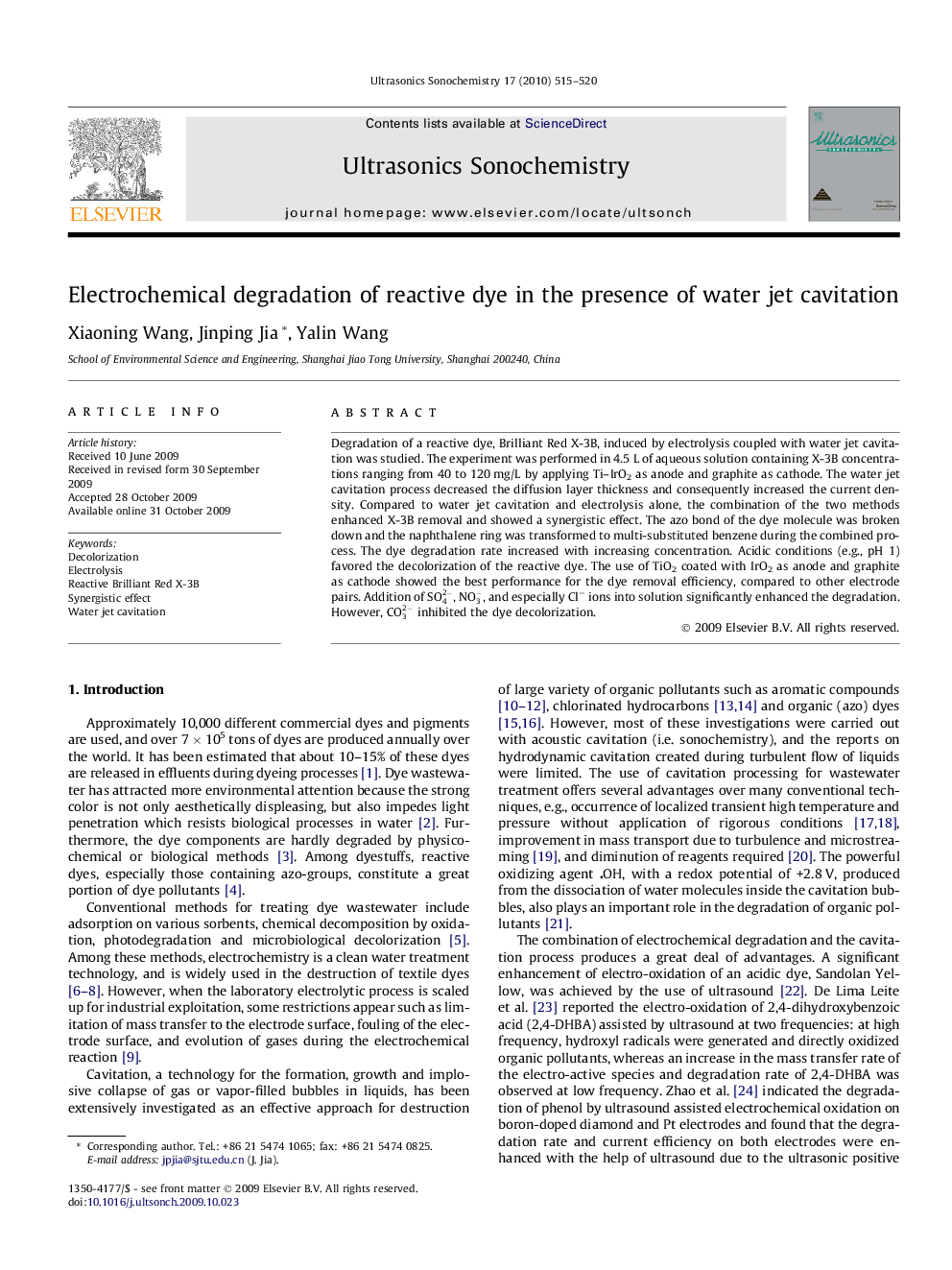| Article ID | Journal | Published Year | Pages | File Type |
|---|---|---|---|---|
| 1269496 | Ultrasonics Sonochemistry | 2010 | 6 Pages |
Degradation of a reactive dye, Brilliant Red X-3B, induced by electrolysis coupled with water jet cavitation was studied. The experiment was performed in 4.5 L of aqueous solution containing X-3B concentrations ranging from 40 to 120 mg/L by applying Ti–IrO2 as anode and graphite as cathode. The water jet cavitation process decreased the diffusion layer thickness and consequently increased the current density. Compared to water jet cavitation and electrolysis alone, the combination of the two methods enhanced X-3B removal and showed a synergistic effect. The azo bond of the dye molecule was broken down and the naphthalene ring was transformed to multi-substituted benzene during the combined process. The dye degradation rate increased with increasing concentration. Acidic conditions (e.g., pH 1) favored the decolorization of the reactive dye. The use of TiO2 coated with IrO2 as anode and graphite as cathode showed the best performance for the dye removal efficiency, compared to other electrode pairs. Addition of SO42-, NO3-, and especially Cl− ions into solution significantly enhanced the degradation. However, CO32- inhibited the dye decolorization.
